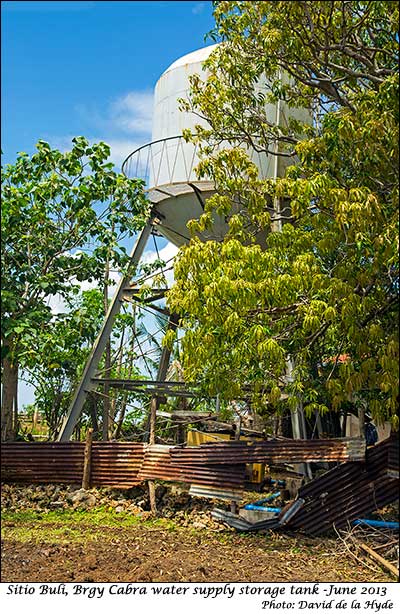
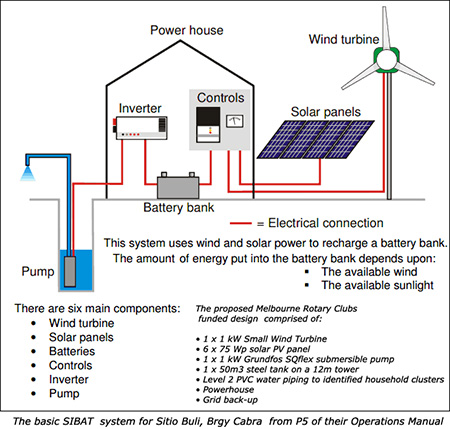
References:
EWB UK Placement - Philippines by Drew Corbyn (http://www.philippineswind.blogspot.com.au/)
Damages and Delays: Coping with typhoons on Cabra Island by Jason L. (http://moriah.canvasdreams.com/~greenezd/?p=1282)
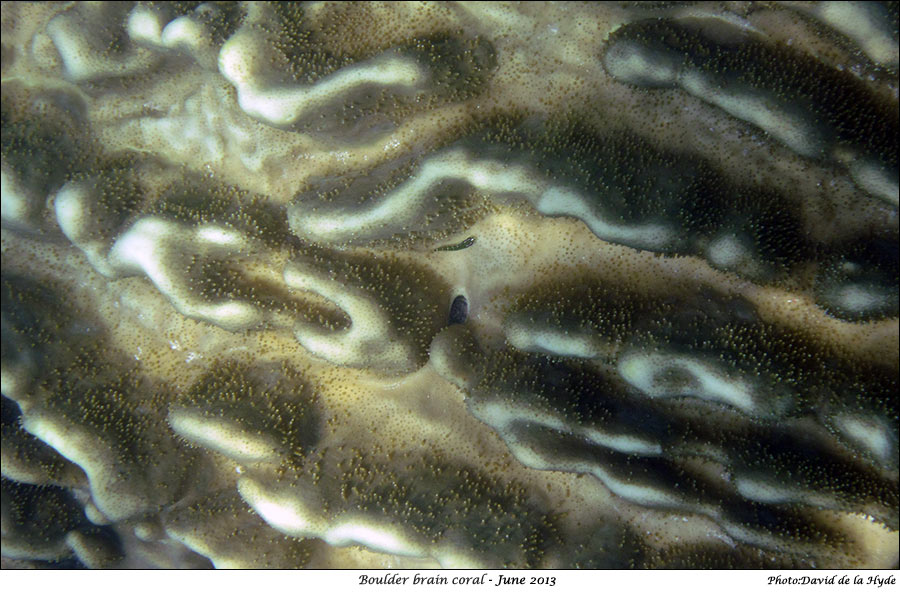
|
|
BULI POTABLE WATER SUPPLY, CABRA ISLAND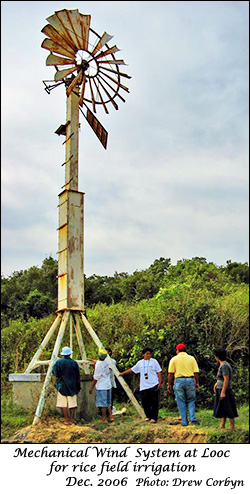
While on the day trip to Balibago we called in at Buli to look at the potable water supply system. Depicted at the left is a mechanical system which was installed at Looc in the mid 1980's by a Catholic priest from Germany. Apparently the system failed after a few hours operation. The vertical shaft transfers the mechanical power from the blades to the water pump. The multi-blade mechanical turbine can operate at lower wind speeds than a three bladed rotor. However at higher wind speeds as experienced on Lubang and Cabra Island the extra torque generated can fracture the shaft and bevel gears. The Sibat wind turbine installation completed in July 2007 was designed for supplying potable water for 140 houses with a population of about 700 people. Previously each household made about four trips a day to collect water. Some collectors lived up to 1.3km from the well. 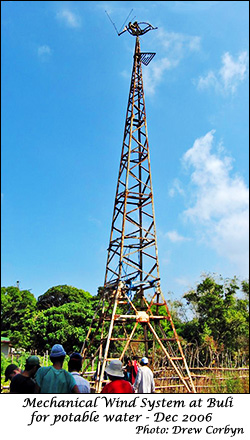
In June 2009 typhoon Nangka severely damaged the Sibat wind turbine - the operators did not lower the 1kW turbine before the storm hit. In October 2010 replacement parts for the turbine arrived in Cabra and the wind turbine was installed in a new location behind the Buli Elementary School. By the end of 2010 the repairs were completed, including renovations to the submersible pump at the bottom of the well pictured on this page. The water from the pump was reconnected to fill the main tank and then temporarily piped to ten plastic water barrels for easier access for the local people. The 2010/2011 installation at the Buli Intermediate School, pictured below, appears to have been funded by a group of Rotary Clubs from Melbourne (MRC). The objective of the MRC project seems to have been the provision of a Renewable Energy system and a water distribution system to at least 30 faucets - locations determined by the local community. When I saw the MRC funded installation in June 2013 the wind turbine was blades looked damaged and the turbine was lowered to the ground - thus the installation seems to be no longer in use and the submersible pump is powered by the Cabra Island diesel generation units. The present water distribution system was stated to be larger than that initially supplied by the MRC - so presumably the original pipelines have been augmented. |


References:
|
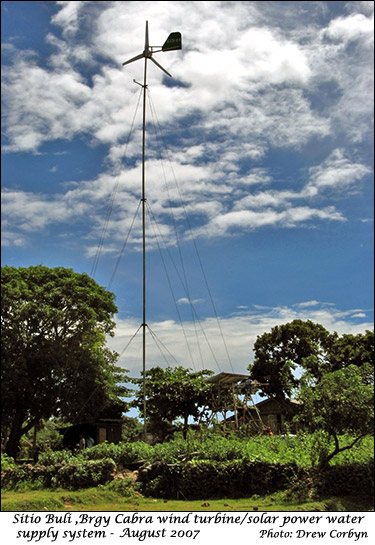
Solar panels can be seen supported by the remnants of the old tower of the windmill constructed in 1972 by Fr. Bernhard Kasselmann, SVD. Father Lois Ortner,as parish priest for Lubang, dug two deep wells: one at Siteo Kay Sameon in January 1991 and the other at Sitio Buli in February 1992. |
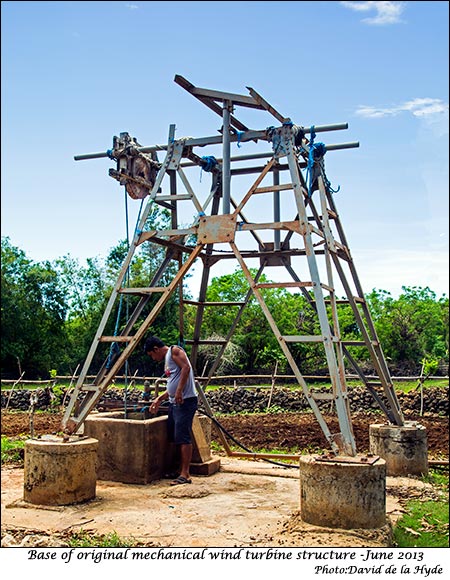
The remains of the old tower, support a pulley, which was used by the locals to raise 4 gallon containers of water 37m to the surface. |
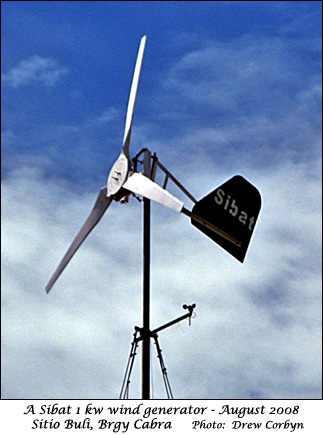
|
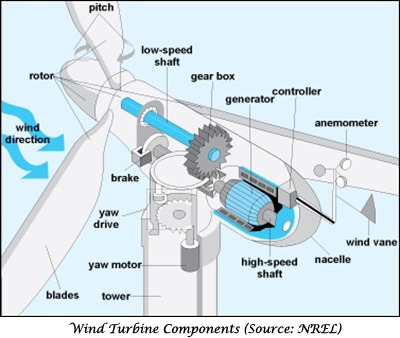
Advantages of 3 blade electric include: Tower can be higher as energy distributed by cable rather than a shaft (energy in the wind is proportional to the cube of it's speed) - for water pumping the tower does not have to be directly over the source - easier to be lowered for maintenance or when wind speeds may get too high. |
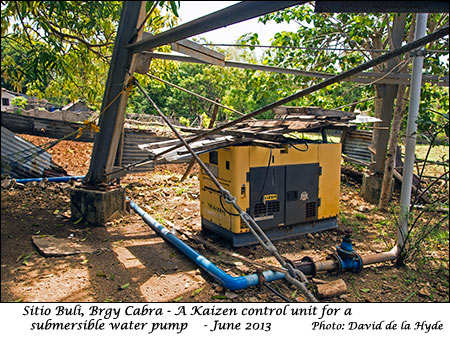
|
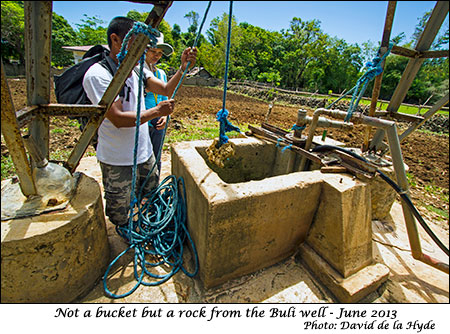
|
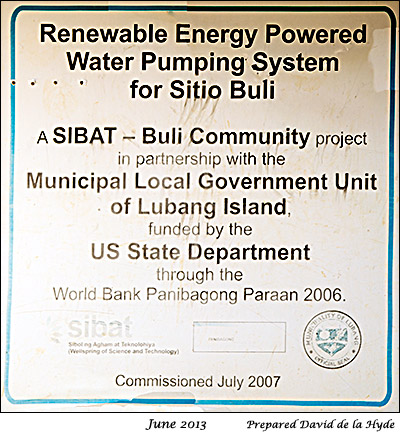
|
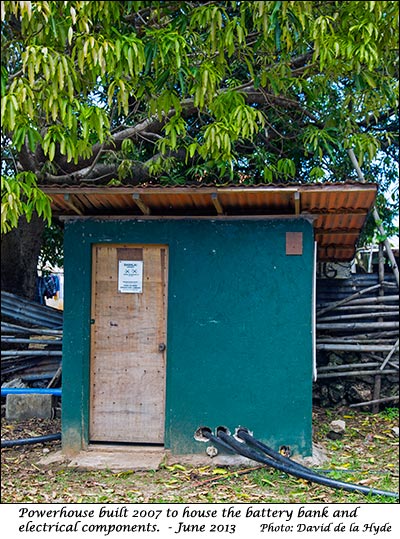
|
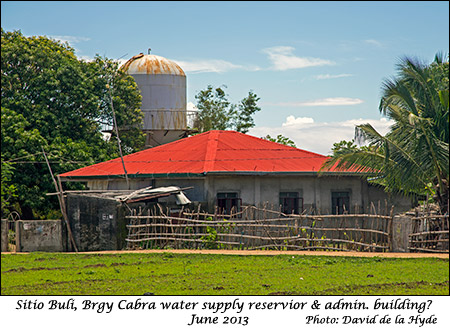
|
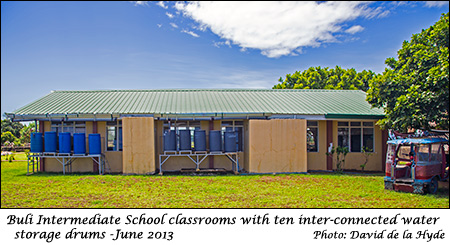
|
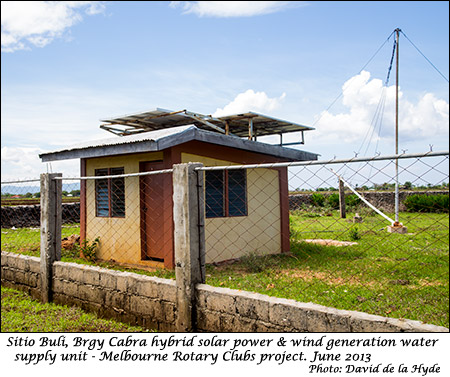
|
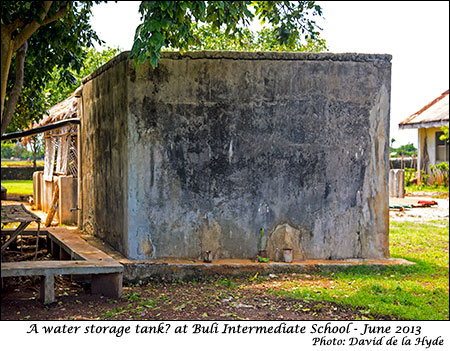
|
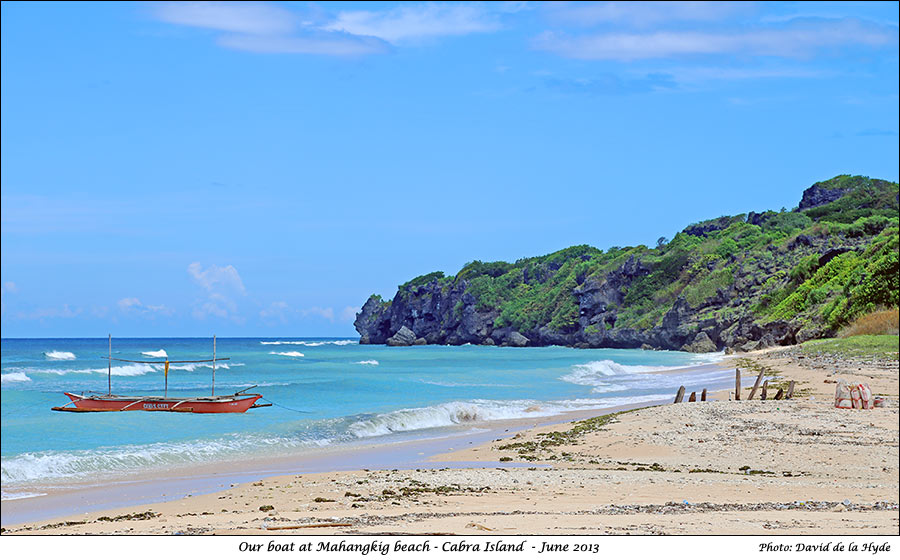
|
|